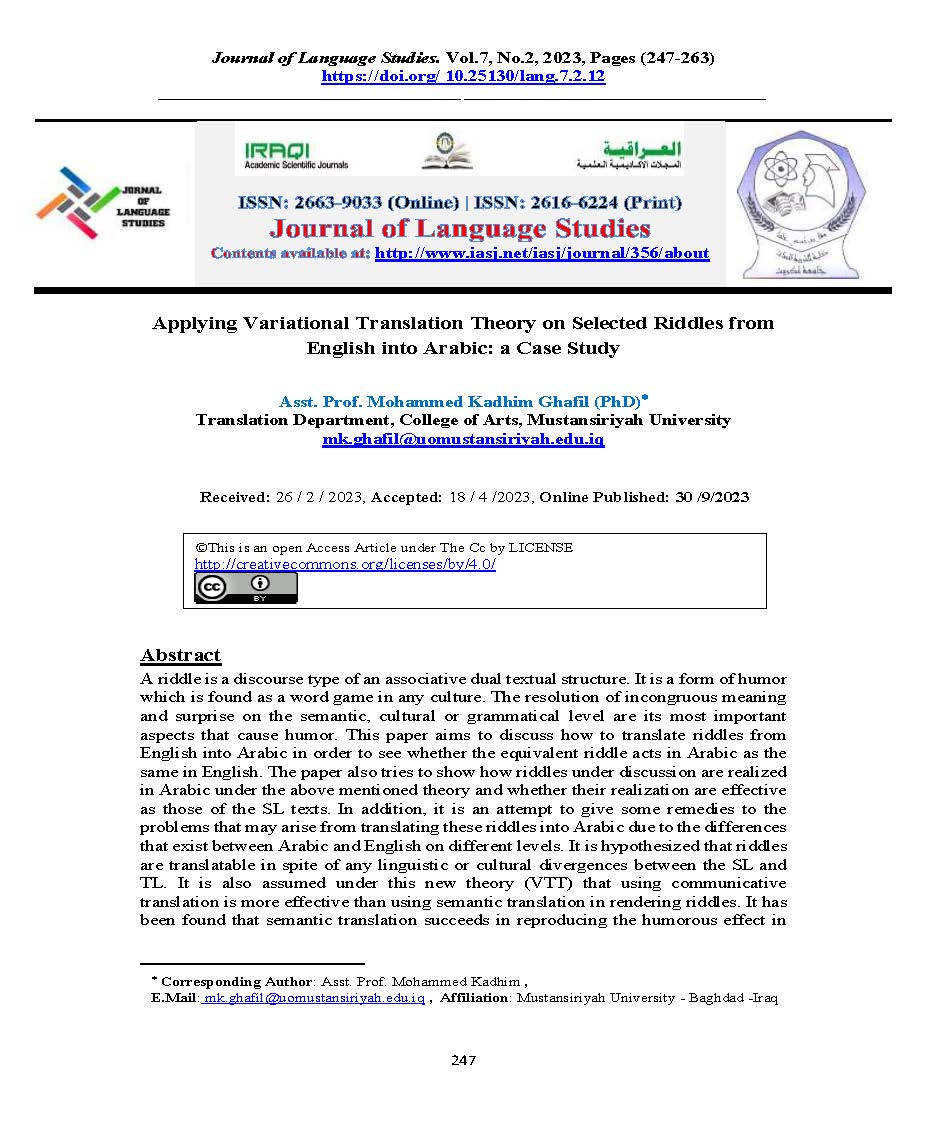Applying Variational Translation Theory on Selected Riddles from English into Arabic: a Case Study
Mohammed Kadhim Ghafil
Translation Department, College of Arts, Mustansiriyah University
DOI: https://doi.org/10.25130/lang.7.2.12
Keywords: Culture, Equivalence, Variational, Communicative, Adpatation
Abstract
A riddle is a discourse type of an associative dual textual structure. It is a form of humor which is found as a word game in any culture. The resolution of incongruous meaning and surprise on the semantic, cultural or grammatical level are its most important aspects that cause humor. This paper aims to discuss how to translate riddles from English into Arabic in order to see whether the equivalent riddle acts in Arabic as the same in English. The paper also tries to show how riddles under discussion are realized in Arabic under the above mentioned theory and whether their realization are effective as those of the SL texts. In addition, it is an attempt to give some remedies to the problems that may arise from translating these riddles into Arabic due to the differences that exist between Arabic and English on different levels. It is hypothesized that riddles are translatable in spite of any linguistic or cultural divergences between the SL and TL. It is also assumed under this new theory (VTT) that using communicative translation is more effective than using semantic translation in rendering riddles. It has been found that semantic translation succeeds in reproducing the humorous effect in the case where there is an accidental culture or linguistic systematic correspondence between the two languages.

